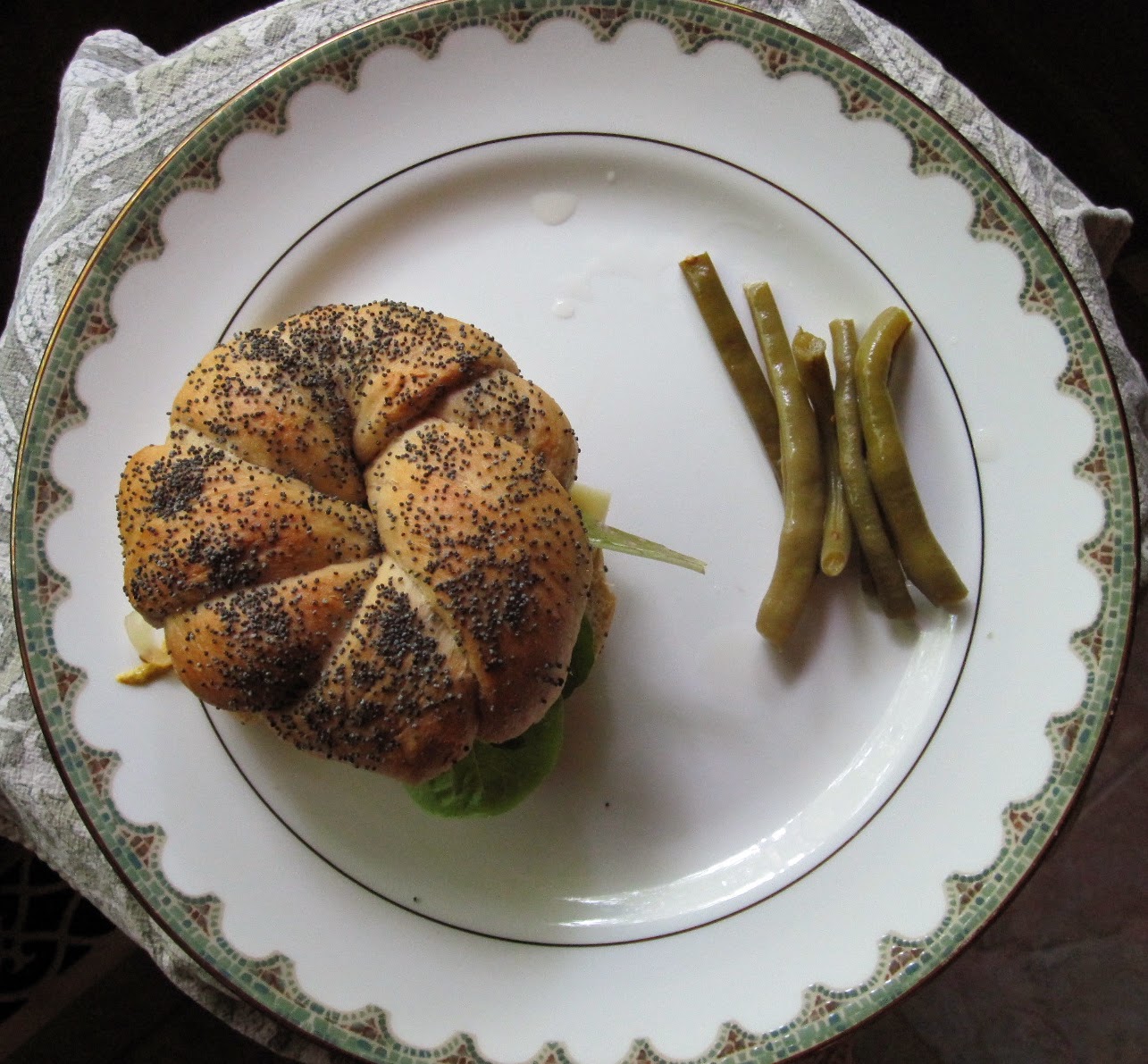Hello spring! After a surprisingly chilly southern winter (nothing compared to what the north experienced), it's nice to see green leaves on trees, flowers blooming and new life everywhere. It's also nice to see those wonderful "Fresh Strawberries" signs at the local farms!
On Monday, I took the youngin on a road to trip to pick some wonderful fresh, naturally grown strawberries with some friends. Even though she didn't do much picking, she loved it. Sometimes she just prefers to supervise. She had fun playing in the dirt and making Pete the Cat dance alongside the strawberries. Strawberries don't keep for a long time so I like to work quickly to preserve them. When we got home I went right to work sorting, washing and stemming the berries. Some went straight to the freezer while some were destined to become jam. The next day, we had a jam session at our house! Good company makes the work much more enjoyable and much faster. Plus, I got to share my jamming knowledge.
This is my tried and true recipe for less sweet jam. I use
Pomona's Universal Pectin so that the jam will gel without using a ton of sugar. In fact, I only used 1.5 cups of sugar to sweeten 8 cups of mashed berries! You can really taste the berries in the finished product instead of just tasting sugar.
This recipe yields about 9 cups, enough for 9 8 ounce jelly jars and will last for one year if kept in a cool dark pantry. Once you open the jar, it's best to eat within 1 month. This recipe may be halved for a smaller batch, but if you want to double, it's best to cook two separate batches.
Not-So-Sweet Strawberry Jam
5 pounds of Strawberries
4 teaspoons Calcium Water*
1/4 cup Bottled Lemon Juice
1.5 cups Sugar
4 teaspoons Pectin
*To make the calcium water, combine 1/2 teaspoon of the calcium powder included in the box of Pomona's Pectin with 1/2 cup water. Mix very well. The mixed calcium water can be stored in the refrigerator.
Prepare for Boiling Water Bath Canning
1. Fill water bath canner or large stock pot with tap water and place over high heat.
2. Wash and sterilize 9 8 ounce mason jars. You can sterilize the jars by placing them in the canner while the water heats up, boiling for a minimum of 15 minutes.
3. Wash 9 regular mouth dome lids and place in a heat proof bowl. Once the jam is cooked, you will cover the lids with warm water before placing on jars to seal. Have 9 regular mouth bands handy.
4. Once the water is at a rolling boil, you are ready to can.
Prepare Fruit
 |
| Five beautiful pounds of berries |
1. Remove the stem and hull of the berries. Using a paring knife, pierce the fruit right on the outer diameter of the stem. Twist the berry around the point of the knife until you have completely circled the stem. Remove the hull.
2. Mash the berries either vigorously or gently depending on the consistency you prefer for your jam. You should have 8 cups of mashed fruit.
 |
| Eight cups gently mashed for a chunky jam |
3. Transfer the fruit to a large dutch oven or stockpot along with the calcium water and lemon juice. Bring to a boil over medium high heat.
4. Meanwhile, combine the pectin with the sugar in a medium bowl and stir until well combined.
 |
| Sugar mixed with pectin |
5. Once the fruit mixture reaches a boil, add the sugar and pectin mixture, stirring constantly to avoid clumps.
6. Stir until well combined and return mixture to a boil.
 |
| All cooked and ready to go into jars |
7. Skim any foam that has risen to the top of the jam if desired. This foam is nothing more than air bubbles moving through a viscous solution, it is fine to eat but you can skim it if you want a clearer jam.
Get Ready to Can
1. Take the lids you washed previously and ladle some of the hot water from your canning pot to cover.
2. Ladle fruit into prepared jars leaving 1/4 inch headspace, the space between the surface of the fruit and the top of the jar.
3. Wipe the rims of the jars with a damp paper towel, center lid on each jar and tighten band around each lid.
 |
| Wiping the rim ensures a good seal |
4. Using tongs, pick up each jar individually, keeping it as straight (perpendicular) as possible and place in water bath canner. Repeat until all of the jars are in the water.
5. Place the lid on the canner and process for 10 minutes. Turn off the heat and remove the canner lid. Allow jars to sit in the hot water for an additional five minutes.
 |
| Rolling Boil |
6. Remove each jar individually, once again keeping the jar as straight as possible, to a cloth towel or napkin lined counter.
 |
| Keep jars nice and straight to maintain the seal. |
7. Allow the jars to rest undisturbed for 24 hours. Check the seals, the dome should be sucked into the jar, clean the jars and label. Enjoy!
 |
| Jam and bread |
Shared at
Clever Chicks Blog Hop and
Eating Inside the Box.







































